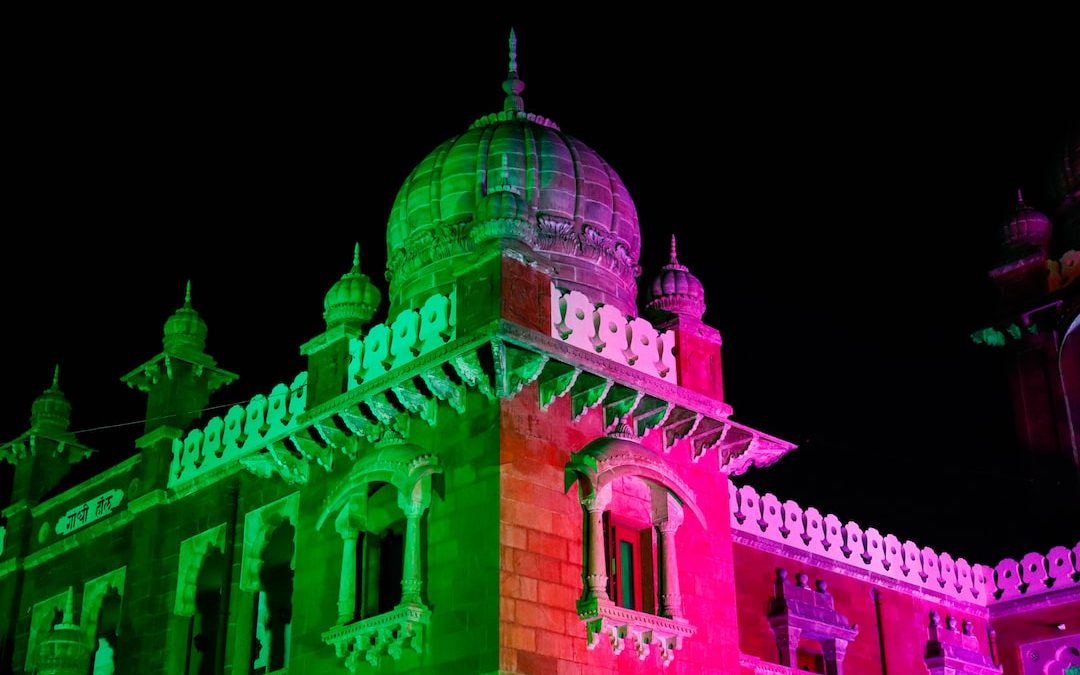Table of Contents
Exploring India’s Cultural Heritage Sites on the UNESCO World Heritage List
Introduction
India is a country steeped in culture and tradition, with centuries of history and art that have been preserved and passed down through generations. This has been recognized by UNESCO, who have listed numerous Indian cultural heritage sites on the UNESCO World Heritage List. From the majestic Taj Mahal, to the ancient ruins of Hampi, to the incredible temples of Khajuraho, India has a wealth of cultural heritage sites that are worth exploring.
Taj Mahal
The Taj Mahal, located in Agra, is one of the most iconic and beautiful monuments in the world. Built in the 17th century by Mughal emperor Shah Jahan, it is a stunning example of Indo-Islamic architecture. The entire complex is made up of white marble, and is decorated with intricate carvings and inlaid stones. The Taj Mahal is a testament to the enduring power of love, as it was built by Shah Jahan in memory of his beloved wife.
Architecture and Design
The Taj Mahal is a marvel of Mughal architecture, combining elements from Persian, Islamic, and Indian architectural styles. The entire complex is made up of white marble, and is decorated with intricate carvings and inlaid stones. The main dome is surrounded by four smaller domes and four slender minarets. The interior of the mausoleum is decorated with fine inlaid marble and semi-precious stones.
Gardens and Fountains
The grounds of the Taj Mahal are home to a number of gardens and fountains. The Charbagh, or four-part garden, is a symmetrical garden with four quincunx-patterned divisions, divided by long walkways. The garden also contains a number of fountains, which were used to cool the air during hot summer days.
Accessibility
The Taj Mahal is open to visitors all year round, and the best time to visit is in the early morning, when the sun is rising and the white marble glistens in the light. There is an entry fee for visitors, and the complex can be accessed by bus, car, or even by boat.
Ruins of Hampi
The ancient ruins of Hampi, located in Karnataka, are a stunning example of the grandeur of the Vijayanagara Empire. The ruins consist of a number of temples, palaces, and monuments, as well as a number of other structures such as gateways and bridges.
History and Significance
The ruins of Hampi are an important archaeological site, as they are the remnants of the once-powerful Vijayanagara Empire. The city of Vijayanagara was the capital of the empire, and the ruins provide a glimpse into the grandeur and wealth of the empire.
Architecture and Design
The ruins of Hampi are a stunning example of Hindu and Islamic architecture. The ruins consist of a number of temples and palaces, as well as gateways, bridges, and other structures. The temples and palaces are decorated with intricate carvings and sculptures, and some of the most remarkable examples of temple architecture can be found at Hampi.
Accessibility
The ruins of Hampi are open to visitors all year round, and there is no entry fee. The best way to get to Hampi is by train, as there is a direct train from Bangalore to Hospet, which is the nearest town. From there, visitors can hire a taxi or take a bus to reach the ruins.
Khajuraho Temples
The Khajuraho Temples, located in Madhya Pradesh, are a stunning example of the Hindu and Jain temples built during the Chandela dynasty. The temples are renowned for their intricate and detailed carvings and sculptures, which depict a variety of Hindu gods and goddesses.
History and Significance
The Khajuraho Temples were built by the Chandela dynasty, which ruled over the region from the 10th to the 12th centuries. The temples are dedicated to Hindu and Jain gods, and are renowned for their intricate and detailed carvings and sculptures.
Architecture and Design
The Khajuraho Temples are a stunning example of Hindu temple architecture. The temples are made up of sandstone and granite, and are decorated with intricate carvings and sculptures. The most famous of the temples is the Kandariya Mahadeva Temple, which is renowned for its sculptures depicting a variety of Hindu gods and goddesses.
Accessibility
The Khajuraho Temples are open to visitors all year round, and there is no entry fee. The best time to visit is in the morning, when the sun is rising and the temples are illuminated by its light. The temples can be accessed by bus, train, or car.
Conclusion
India is home to a wealth of cultural heritage sites, which have been recognized by UNESCO and listed on the UNESCO World Heritage List. From the majestic Taj Mahal, to the ancient ruins of Hampi, to the incredible temples of Khajuraho, India has a wealth of cultural heritage sites that are worth exploring. Each of these sites is a testament to the rich cultural heritage of India, and are sure to leave visitors in awe.












